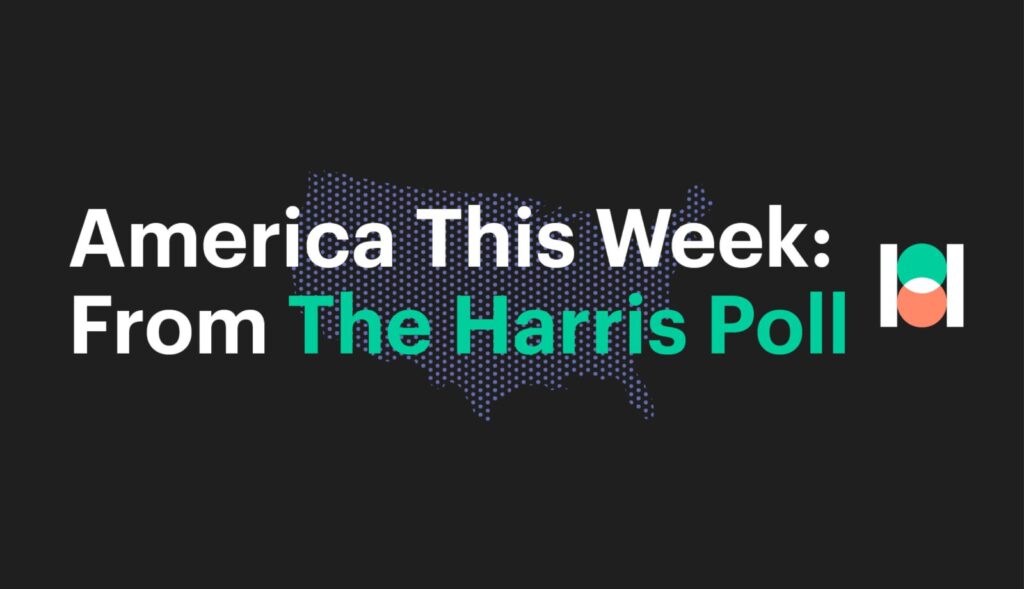Brief • 3 min Read

Growing up at any point in time is hard, but it’s especially so during a pandemic. From remote schooling to fewer playdates to missing out on major milestones, the COVID-19 pandemic has drastically altered the lives of American children. Although COVID-19 has largely spared children from its direct, physical consequences, the virus’s hold over their lives is still evident. A recent study conducted by The Harris Poll on behalf of Every Child Pediatrics finds children are increasingly struggling with mental health as a result of the pandemic and its corresponding economic crisis.
In this study, parents of school-aged children report that their kids had experienced increased symptoms of mental illness since the pandemic began last March. Although a little over half (55%) of children are described by their parents as in excellent or very good mental health, one in eight children now have parents who report their kids’ mental health as poor or fair.
Prior to the pandemic, approximately 10% of school-aged children showed mental health symptoms including anger, difficulty concentrating or forgetfulness, lethargy, fear (of being alone, the dark, etc.), and headaches.
Additionally, since COVID-19 arrived in the U.S. in March, parents report that one in seven children is quick to anger, has trouble concentrating, or has unusually low energy. At least 10% of children worry constantly, have reduced interest in everyday activities, procrastinate or neglect duties, have reduced interest in social relationships, have difficulty sleeping, are more sensitive to rejection and failure, have headaches, are sad frequently, or are clingy.
Children of all ages are experiencing a rise in mental health issues
Since the pandemic started, parents of children in elementary school see their children tuning out and exhibiting anxiety-driven habits. Today, at least one in ten elementary schoolers suffers from
- quickness to anger (17%, up 2% from before the pandemic)
- difficulty concentrating or forgetfulness (12%, down 1%),
- constant worrying (12%, up 6%),
- clinginess (12%, up 1%),
- difficulty sleeping or frequent bad dreams (11%, up 4%),
- frequent sadness (11%, up 6%),
- fear (of being alone, the dark, etc.) (10%, down 8%),
- bedwetting (10%, up 2%),
- nervous habits (e.g., nail biting, skin picking, pacing) (10%, down 2%),
- more sensitivity to rejection and failure (10%, up 2%), and
- procrastination or neglecting responsibilities (10%, unchanged).
Similar to very young students, middle school students also show an overall uptick in mental health and anxiety-related issues, with such issues influencing their participation in everyday activities and interactions with others. At least one in ten middle schoolers has parents that say their children display
- reduced interested in everyday activities (17%, up 9% from before the pandemic),
- difficulty concentrating or procrastination (16%, up 8%),
- lack of interest in relationships or reduced social interactions (15%, up 8%),
- constant worrying (12%, up 4%)
- difficulty sleeping or frequent bad dreams (12%, up 5%),
- quickness to anger or more dramatic responses (12%, up 1%),
- frequent sadness (11%, up 6%),
- more sensitivity to rejection or failure (11%, up 3%),
- clinginess (12%, unchanged),
- nervous habits (e.g., nail biting, skin picking, pacing) (11%, up 5%),
- low energy (10%, up 1%)
- stomachaches (10%, up 1%), and
- procrastination or neglect of responsibilities (10%, down 2%).
With more schoolwork and responsibilities than younger children, high school students are showing higher levels of anxiety, fatigue, and body aches. According to their parents, at least one in ten high schoolers suffers from
- low energy (26%, up 10% from before the pandemic),
- headaches (19%, up 2%),
- difficulty concentrating or forgetfulness (17%, up 3%),
- procrastination or neglecting responsibilities (17%, up 4%),
- quickness to anger or more dramatic responses (17%, up 4%),
- constant worrying (16%, up 4%),
- increase in negative thoughts (14%, up 7%),
- more sensitivity to rejection or failure, nervous habits (e.g., nail biting, skin picking, pacing), lack of interest in relationships or reduced social interactions (all 13%, up 6%),
- reduced interest in everyday activities (12%, up 4%), and
- difficulty sleeping or frequent bad dreams (12%, up 3%).
COVID-19 has also given rise to inequality in mental health experiences
Mental health issues are prevalent in households earning under $50,000 per year, where nearly half (47%) of children currently display these symptoms. These households also reported a similar number of children with symptoms of mental illness prior to the pandemic (49%). Unfortunately, due to the pandemic’s negative financial impact and economic recession, more households are likely to fall into this category now than before the onset of COVID-19. Eighteen percent of all children had a member of their household lose a job during the pandemic, and nearly half saw their households suffer a drop in income.
Parents in households making $75,000 or more per year actually report that more than half of their children are displaying symptoms of mental illness, but the symptoms that affect these children are different than those displayed by children in lower income households. Across all households, parents report their children are quick to anger and that their children have difficulty concentrating. However, while children in households making less than $50,000 most often display difficulty sleeping or frequent bad dreams (13%) and more sensitivity to rejection or failure (13%), children in higher income households most often displayed low energy (18% $75K-$99.9K, 16% $100K+), reduced interest in everyday activities (18% $75K-$99.9K), nervous habits (17% $75K-$99.9K), and procrastination or neglecting responsibilities (16% $75K-$99.9K) — symptoms that those in lower income households may arguably perceive as less personally severe.
Children have not escaped the human cost of the pandemic either, especially those in households of color. Compared to 11% of children in White households (based on the ethnicity of parents surveyed), 27% of children in Hispanic American households and 22% of children in African American households had a COVID-19 infection in their household. Overall, one in ten school-age children has experienced a COVID-related death in the family. However, this number was even higher for students in Hispanic households, with one in six (16%) children experiencing a COVID-related death in the family.
What are parents doing to help their children, and is it working?
While children are experiencing more symptoms of mental illness, slightly fewer parents are seeking mental health treatment for their children compared to before the pandemic. Before the pandemic, 18% of all children had parents report seeking counseling or therapy for their children’s mental health issues, and 17% of all children had parents say their children were prescribed medication. These numbers have decreased during the pandemic, with 17% of all children now in therapy and only 14% of all children being treated with medication.
Moreover, compared to 35% of children in a similar situation before the pandemic, 38% of children currently displaying mental health illness symptoms have parents that say they have not sought any treatment for their children. These parents do not think their children require any treatment (39% of children with mental health issues who did not receive any treatment), do not think treatment would be helpful (17%), and cannot afford treatment for their children (14%).
What’s worse, parents who do seek treatment for their children report that treatment seems less effective than it was before the pandemic. More specifically, parents report a decrease in the efficacy of medication as a mental health treatment. Before the pandemic, 61% of children on medication had parents who said the treatment was extremely or very effective, and only 6% of children’s parents called the treatment not very effective or not at all effective. Today, medicine’s efficacy rating has slipped as just 59% of medicated children have parents who call the treatment extremely or very effective, and 10% of medicated children have parents who say medication is not very effective or completely ineffective now.
The perception of therapy’s efficacy has become more polarized: the number of children with parents that say it helps a lot or does not help at all have both increased. Half of children in therapy have parents that say counseling or therapy has been extremely or very effective (50%, up 2% from before the pandemic). However, another 11% of children in counseling have parents who say counseling has been not very effective or not at all effective (up 5% from before the pandemic).
The Centers for Disease Control and Prevention recently reported that, to date, children only account for 4% of all COVID-19 cases in the U.S. and less than 0.09% of the pandemic’s death toll. However, with an estimated 47% of school-age children currently struggling with mental health, it’s clear that American children are dealing with their own epidemic, and it will take more than a vaccine to help them overcome its effects.
Methodology
This survey was conducted online within the United States between November 14, 2020, and November 18, 2020, among 492 parents or guardians (aged 18 and over) of 846 children by The Harris Poll on behalf of Every Child Pediatrics and Dr. Laura Luzietti. Figures for age, sex, race/ethnicity, education, region, and household income were weighted where necessary to bring them into line with their actual proportions in the population. Propensity score weighting was used to adjust for respondents’ propensity to be online.
All sample surveys and polls, whether or not they use probability sampling, are subject to multiple sources of error which are most often not possible to quantify or estimate, including sampling error, coverage error, error associated with nonresponse, error associated with question wording and response options, and post-survey weighting and adjustments. Therefore, the words “margin of error” are avoided as they are misleading. All that can be calculated are different possible sampling errors with different probabilities for pure, unweighted, random samples with 100% response rates. These are only theoretical because no published polls come close to this ideal.
Respondents for this survey were selected from among those who have agreed to participate in our surveys. The data have been weighted to reflect the composition of the adult population. Because the sample is based on those who agreed to participate in the online panel, no estimates of theoretical sampling error can be calculated.
For more information on methodology, please contact Dami Rosanwo.
Subscribe for more Insights
Subscribe to our newsletter for the latest trends in business, politics, culture, and more.
Download the Data
Get the full data tabs for this survey conducted online within the United States by The Harris Poll on behalf of Every Child Pediatrics and Dr. Laura Luzietti between November 14, 2020, and November 18, 2020, among 492 parents or guardians (aged 18 and over) of 846 children.
Download
Subscribe for more Insights
Subscribe to our newsletter for the latest trends in business, politics, culture, and more.
Download the Data
Get the full data tabs for this survey conducted online within the United States by The Harris Poll on behalf of Every Child Pediatrics and Dr. Laura Luzietti between November 14, 2020, and November 18, 2020, among 492 parents or guardians (aged 18 and over) of 846 children.
DownloadRelated Content








